A recent study by Atkins and Imperial College London has demonstrated that optimising wellbeing in the work place has real results. With scarce resources and an ongoing skills crisis, it is essential to maximise employee productivity. David Blackman reports on the study and the industry’s reaction at a roundtable event held in association with Building

The UK faces a productivity crisis. According to recent figures from the Office for National Statistics, UK productivity is 15.9% lower than the G7 average and significantly below that of France (22.7%), Germany (26.7%) and the US (22.2%). Put simply, it takes the average British worker about five days to do what his or her French counterpart does in four. If we don’t become more productive, economists warn that we won’t be able to pay ourselves more, which means living standards will continue to flatline.
Three-quarters of the UK’s economic activity takes place in offices, which accommodate some 20 million workers. The buildings so many of us work in therefore have a crucial role in solving the country’s wider productivity puzzle.

The focus of a new report by Atkins and Imperial College London is on how buildings in which we work can promote our health and wellbeing, which should in turn create a more productive workforce (see The Research box).
Building magazine, in association with Atkins, recently brought together experts from across the worlds of property development and real estate to discuss the study’s findings.
The economic case
Philip Watson, UK design director for Atkins, outlined the findings of the study. He emphasised that even based on the most pessimistic interpretation of the data, investment in better buildings would pay back within six years.
“Given that 90% of business costs are staff, the economic arguments for changing the business equation for investment in the built environment seem compelling.
“As a designer, I naturally would think that design impacts on people and we have the ability to shape the environment and enable people to fulfill their potential. This research is telling me objectively that there is an economic argument too.”
But what about attracting talent? Benjy Lesser, development manager at developer Derwent London, told the roundtable that employing the best people was increasingly critical to success in the modern economy.
“The companies that show increasing signs of accelerated growth are the ones that have taken cognisance of the changing nature of work and the changing desires of people coming into work.
“In this country we do creative, international, service-based work: it’s about trying to attract those people to your organisation and allowing those people to collaborate.”
We have the ability to shape the environment and enable people to fulfil their potential. this research is telling me there is an economic argument too
Philip Watson, uk design director, Atkins
Steve Tasker, business development director at Atkins, agreed: “Those people will become more precious and if your environment doesn’t attract those people you will fail. The bits you can’t automate become more precious.”
He said that this analysis was borne out by Atkins’ own experience as an employer.
“At Atkins, the biggest contribution to productivity is great people: if you get great people you get great work.”

And Elinor Huggett, sustainability adviser at the UK Green Building Council, said that younger employees, empowered by the greater control that the internet gives them over their lives, were increasingly choosy about the kinds of environment they wanted to work in.
“It’s becoming apparent that people don’t want to be in unhealthy offices,” she said.
Watson agreed: “They are expecting employers to provide a decent, vibrant workplace.”
The challenge for developers is to respond by creating the right environments, said Lesser: “We have to get that right for our occupiers so that they can do their best work. We realised that if we weren’t thinking about the occupiers we weren’t doing our job.”
He pointed to Google as an example. “Google figured out that if you put a load of people from different backgrounds into a loose fit environment, they would come up with something that a homogenous group of people wouldn’t have come up with.”
This more fluid way of working requires new management styles, which must be reflected in how workspaces are organised, said Tasker: “The environment is a huge part of attracting those great people so they can deliver that new management style.
“The space needs to reflect these new leadership styles. If it works against that, you are destroying value because your space doesn’t align with how to run your business.”
Claudine Blamey, head of sustainability and stewardship at the Crown Estate, stressed the importance of change management and said that the company had just moved to “fantastic” new offices.
“The workforce went through a grief process to get there. It’s a classic process: people go through anger to coming to terms to getting a bit more excited. You have to go through a whole process to make that happen and you don’t know it will be alright in the end. Not every solution will fit every organisation, the detail behind these things can make a huge difference on productivity.”
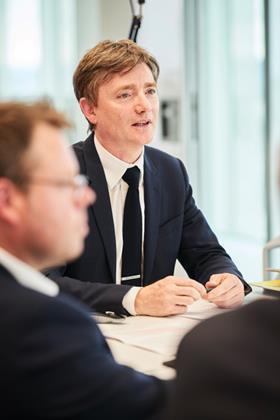
Architecture is, ultimately, all about improving people’s wellbeing. As we move toward a more complex and interconnected world I believe a much more open and collaborative approach is needed between architects, designers, infrastructure investors, and the people who use buildings. To put people at the heart of design, we need to better understand the effect of people’s relationship with their environment and how to manipulate space to maximise the benefits on wellbeing and performance. We need to give the owners and operators of buildings the information they need to make better informed investment decisions and maximise the potential of people and property.
Until now sustainability has mainly focused on energy use and carbon emissions. And while these remain important, we believe more emphasis needs to be placed on economic sustainability - through improving people’s experience of the built environment and the resultant impact on performance and productivity. By moving beyond the simplistic model of investment which considers only capital and operating cost, to also incorporate how workers’ health and wellbeing affects the bottom line - that is a capital expenditure (Capex), operating expense (Opex) and People Cost model.
Thoughtful design does require additional investment, but research shows it could offer a long-term solution to the key challenges of urbanisation and economic growth in front
of us.
Philip Watson, UK design director, Atkins
The facts
Dr Sebastian Macmillan, director of the Interdisciplinary Design for the Built Environment at the University of Cambridge, pointed to a strong academic pedigree for the approach reflected in the Atkins and Imperial study.
As far back as the 1960s, he said, environmental psychologists had conducted tests on how individuals interacted with their environment. This had eventually led to a backlash with environmental psychologists accused of “overclaiming” the influence of the built environment.
Macmillan said more recently a body of literature had grown up that showed how the quality of the built environment influenced outcomes in areas like health and education.

There was plenty of evidence about the negative consequences of poor-quality buildings. Overheated and stuffy environments led to falls in productivity, while condensation and mould in poor housing led to higher healthcare costs, for example.
But it was easier to demonstrate the costs of poor quality buildings than the benefits of improvements, such as good ventilation and views, he said. “Once you get to a certain plateau, it may be the best you can hope for. Unfortunately, I don’t think anyone has really bottomed out the evidence and collated it into something that investors and decision-makers will buy into.”
But he said the study offered a potential foundation for a more robust evidence base.
“That sort of thinking has disappeared, I’m glad it’s been revived here,” he said.
We need to get this message to the actual [end-users]. we can make our buildings better and healthier
Martin Gettings, Canary Wharf Group
Lesser said that his company had realised that tenants wanted the light and space offered by the converted former industrial buildings, which Derwent had initially specialised in.
“We love converting old industrial buildings and only recently got into new build, looking at the qualities that old buildings had that occupiers were seeking. The more enlightened employers wanted space that had those qualities.
“We feel that the market is moving towards that and less about building air-conditioned boxes of sealed glass.”
However, occupiers may still need convincing, as Mike Clark, director of estates and facilities management at the University of Brighton, found when the institution moved: “It took a lot to convince people to move into what we thought was a better environment from a dingy basement.”
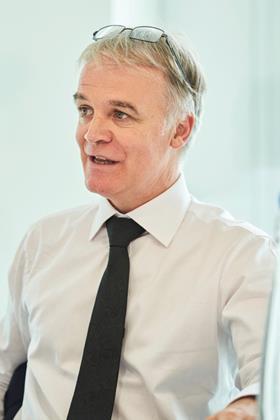
Wellbeing in action
Atkins doesn’t just help deliver new buildings for other companies: it has also just gone through the process of creating a new headquarters for itself.
For the last two years, the international design and engineering company has been building a new replacement for its headquarters in Epsom in Surrey.
The three-storey building at the Woodcote Grove site, where the company has had offices since the 1960s, will house around 1,000 staff.
Built with recycled materials wherever possible, the building aims to meet BREEAM “excellent” and EPC A standards.
Steve Tasker, business development director at Atkins, told the roundtable that effectively being a client has been an eye-opening experience.
“I am buying the building, the design team are designing it and I am affected by the whole value chain of decision making.”
The wider benefits
However, Dan Epstein, director of sustainability at the Useful Simple Trust and also working with the Old Oak Park Royal Development Corporation (OPDC), cautioned that potential benefits of a working environment that promotes wellbeing is not limited to productivity.
He questioned the currently fashionable view that companies need to provide top-notch buildings to attract footloose talent, who he pointed out did not make up the bulk of the workforce. “The majority of people don’t have a choice over where they are working,” he said.
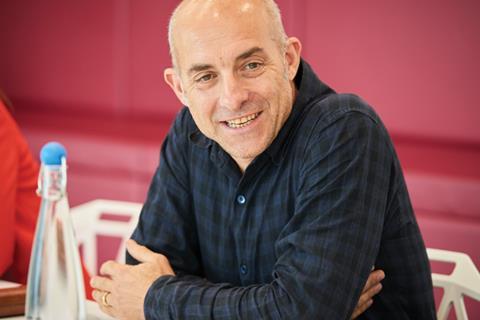
Rather than individual firms, society as a whole enjoyed the fruits of better environments in the form of greater happiness, better health and less violence, he said: “The real benefit of building great buildings and creating great environments has to be so much greater than productivity.
“It’s really hard to disaggregate the benefits and it’s wrong to reduce it to a measure of productivity and economic output, it’s so much more than that.”
Martin Gettings, head of sustainability at the Canary Wharf Group, agreed that there was a holistic benefit from a healthy workplace, and said “not many” employees appreciated how the quality of their surroundings influenced their health, state of mind and productivity.
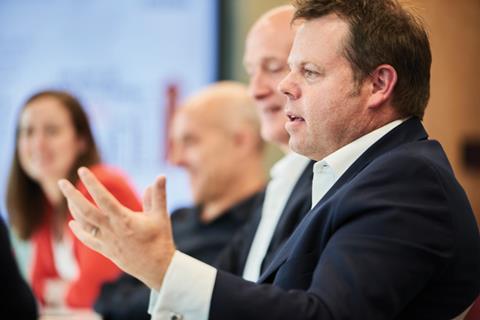
“We need to get this message to the actual people. We can make our buildings better and healthier, but until we make a connection with the end users who will decide whether they will work for an employer because they provide a brilliant space, we will be wasting our time.”
Epstein said that the benefits needed to be measured carefully, and that post-occupancy surveys were the best way to demonstrate the influence of better buildings. “The problem is we don’t go back and look at the things we design and build.
“If we can’t demonstrate a direct correlation and that the investment required isn’t outweighed by the value you get back it’s a difficult proposition.”
The OPDC, which is overseeing the construction of the Old Oak area of west London, will be carrying out post-occupancy surveys, he said.
“We will be requiring developers working in Old Oak area to provide post-occupancy surveys for three years to a common standard so we can begin to get real data.”
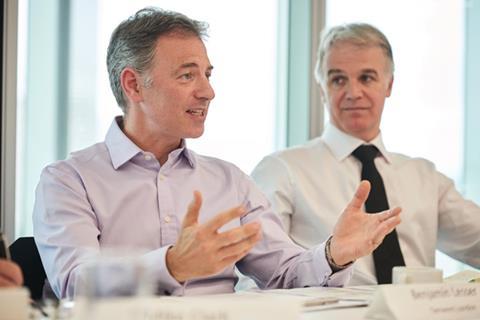
He said that three years was a good timespan to measure the impact of buildings. “During that period, we will quite quickly see big change and then it will tail off. If you can isolate productivity measures you can see what the change is, you need to keep it in a period that is real, if you leave it too long, occupiers change.”
And he said that it would still be tricky to disentangle the influence of the new premises from other factors, like the business cycle.
Gettings said that one of Canary Wharf’s tenants had moved from offices in phase one of the estate into one of its new BREEAM “excellent” rated buildings. He said that key indicators like staff productivity and staff satisfaction were on the up, demonstrating that the new building had resulted in a clear improvement.
Macmillan said that the Capital One call centre in Nottingham was a good example of a missed post-occupancy survey. “The clients invested in a bright, lively building that would be attractive to young people who would be engaged to make cold calls to their peers to take Capital One credit cards. However nobody did a post-project review”.
So, the study has provided a good foundation for further debate on the link between human-centred design and productivity. We look forward to seeing further research.
The research
Atkins has published a study on the relationship between wellness and productivity. The underlying data research was conducted by researchers from Imperial College London in partnership with Atkins, and seeks to examine how human-centred design can promote improved health and wellbeing with spin-off benefits in terms of greater productivity.
Researchers from Imperial identified six key areas as being critical to people’s experience of the office environment, and therefore, as having an impact on productivity. They include:
1. Lighting - improving daylight provision and increasing the quality of artificial light.
2. Ventilation and air quality - increasing ventilation and reducing volatile organic compounds and carbon dioxide.
3. Thermal comfort - the temperature of the working environment, including an individual’s ability to control it.
4. Noise and acoustics - covers environmental noise (such as roads), white noise (such as air conditioning systems) and pink noise (such as human voices).
5. Interactive office - the level of control an individual has over the office environment, for example, control of lighting, ventilation and physical desk set-up.
6. Visual / biophilia - plants, nature, a view of the outdoors, interior colours and materials.
The researchers discovered that workplace productivity could be enhanced by an estimated 5-8% by introducing these six human-centred design interventions.
If all offices in the UK were upgraded with such interventions, productivity could be improved by 5-8%, and this extra productivity could boost UK GDP by £12bn to £20bn, which would be equivalent to 0.9% on GDP.
The research acknowledges that “thoughtful design” requires as much as 21% additional investment. However, it estimates that it will be possible to generate payback over a period from two to six years.
Roundtable guests
Chair: Sarah Richardson, editor, Building
Claudine Blamey, head of sustainability and stewardship, The Crown Estate
Mike Clark, director of estate and facilities management, University of Brighton, and
chairman of the Association of University Directors of Estates
Dan Epstein, director of sustainability, Useful Simple Trust, and OPDC
Benjy Lesser, development manager, Derwent London
Martin Gettings, sustainability manager, Canary Wharf Group
Elinor Huggett, sustainability adviser, UK Green Building Council
Dr Sebastian Macmillan, programme director interdisciplinary design for the built environment, University of Cambridge
Steve Tasker, business development director, infrastructure, Atkins
Philip Watson, UK design director - infrastructure, Atkins




























No comments yet